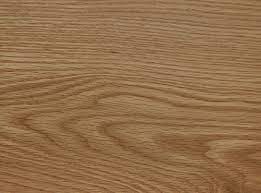American Oak Barrels vs French Oak Barrels
Comparing the Characteristics and Applications of Two Popular Barrel-Ageing Woods
When it comes to oak for barrel ageing wine and spirits, two varieties stand out: American oak (Quercus alba) and French oak (Quercus petraea and Quercus robur). Each type has its unique set of characteristics that can add distinct flavors and aromas to the ageing beverage. In this blog, we will explore the differences between American and French oak and discuss their applications in the wine and spirits industry.
To begin with, let’s look at the physical characteristics of these two oaks. American oak grows primarily in the eastern region of North America, and the wood is characterized by the strong presence of tyloses, a natural substance that clogs up the wood’s pores, making it difficult for liquids to penetrate. American oak also has a higher lignin content, which contributes to the stronger flavors of vanilla, coconut, and dill that it imparts to the wine or spirit. The wood grains of American oak are wide and prominent, creating a greater surface area for the wine or spirit to interact with, while the wood’s porosity allows for greater oxidation during aging.
On the other hand, French oak is grown in several regions of France, including central France and the Limousin and Allier forests. French oak has a tighter grain structure than American oak, which results in a subtler impact on the aging wine or spirit. French oak is also characterized by the higher presence of tannins, vanillin, and other phenolic compounds in the wood. This contributes to a more complex and nuanced flavor profile of caramel, coffee, spice, and floral elements.
The differences in the physical characteristics of American and French oak translate to differences in flavor and aroma when used for barrel aging. American oak’s strong vanilla and coconut flavors and aroma make it a popular choice for bourbon and other American-style whiskies. The dill flavor is less desirable, but a skilled cooper can reduce its impact through toasting and other crafting techniques. American oak can also be used for wines, particularly California-style cabernets and zinfandels, where the vanilla and coconut notes complement the wine’s bold fruit flavors.
French oak, with its subtler flavor profile, is favored for barrel aging wines of more delicate and nuanced flavors, such as Burgundian reds and whites, as well as Bordeaux blends. The tight grain structure of French oak means that it imparts less wood flavor to the wine, but does offer a more sophisticated array of flavors, like spice, toast, and floral elements, and also provides a smoother mouthfeel. The higher tannin content in French oak is also beneficial for red wines, as it can contribute to the wine’s structure and aging potential.
Lastly, let’s consider the price difference between American and French oak. American oak is generally less expensive than French oak, which can make it a more economical choice for many producers. French oak demands a higher price due to the lengthy and labor-intensive growing and harvesting process, along with the fact that fewer trees are harvested, as French regulations are stricter than in the US. The craftsmanship in cooperages is also different, with French coopers known for their traditional techniques and attention to detail. In conclusion, both American and French oak are popular choices for barrel aging wines and spirits, and each has its own unique set of characteristics that lend themselves to different applications. American oak imparts a stronger flavor profile of vanilla, coconut, and dill, while French oak provides subtler, more complex flavors of spice, toast, and floral elements. American oak is often used for American-style whiskies and bolder California wines, whereas French oak is favored for more delicate and nuanced wines such as those from Burgundy and Bordeaux. Each type of oak varies in price and cooperage expertise required to produce and craft, adding to the uniqueness and value of the finished product.
View all our products to find out what barrel might be best for your needs.
Find similar articles:
american oak Differences Between American Oak and French Oak french oak oak barrels spirits barrelsMore stories

Rustic > Raw > Refurbished

